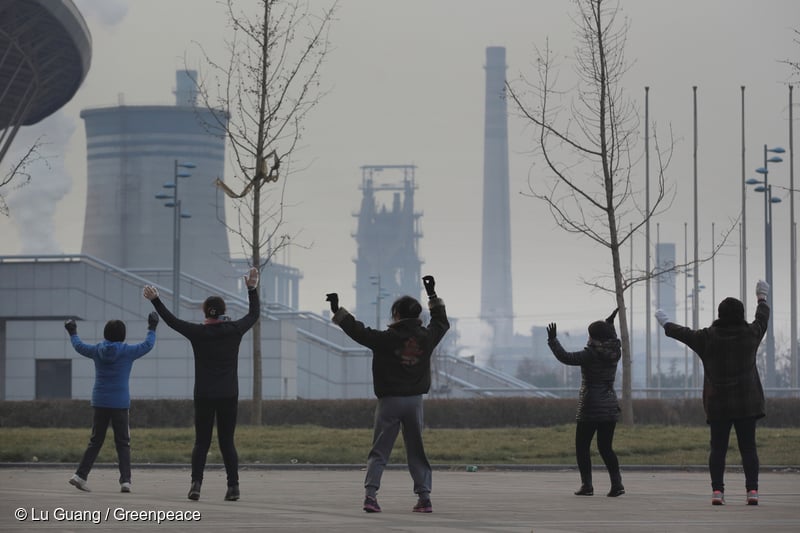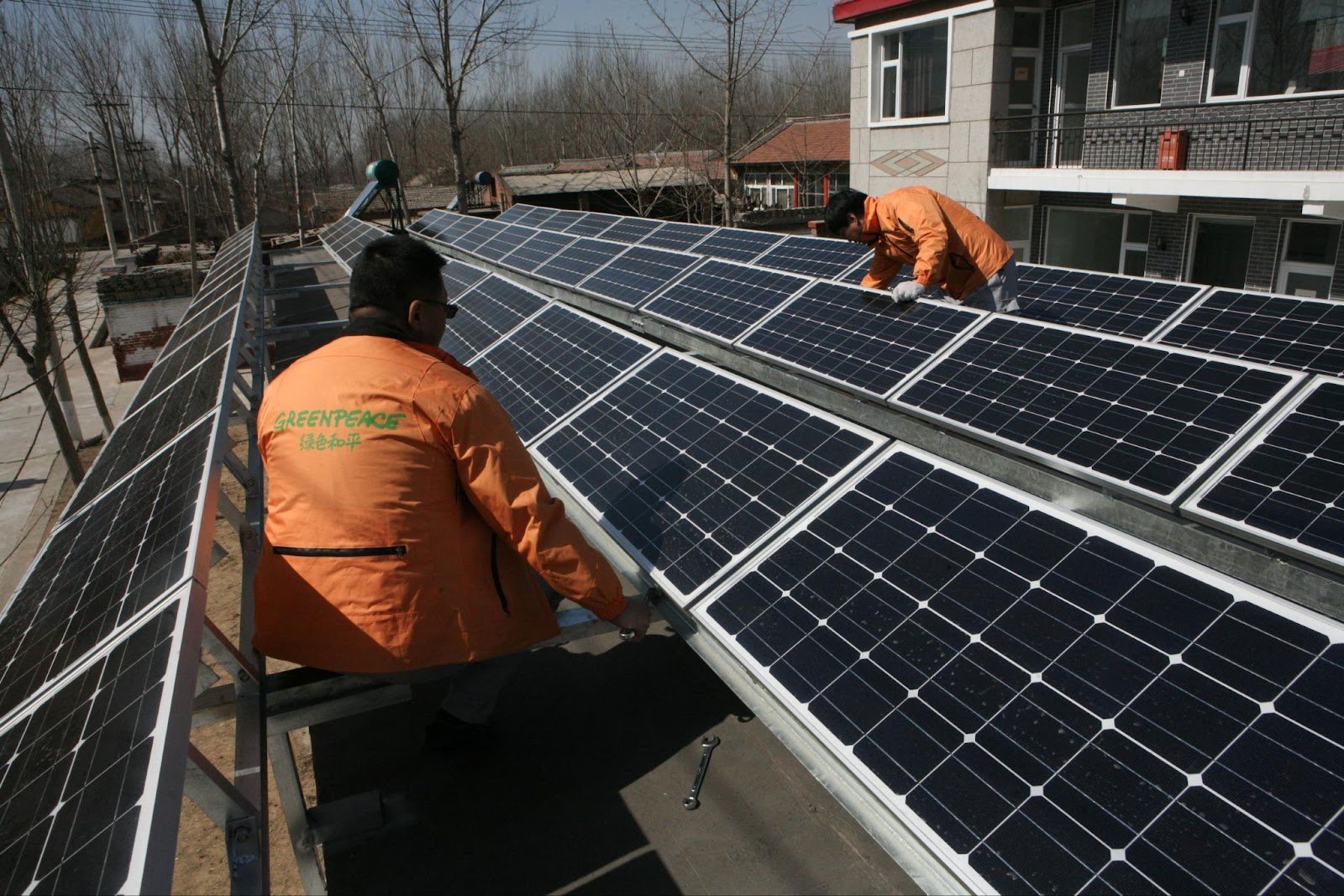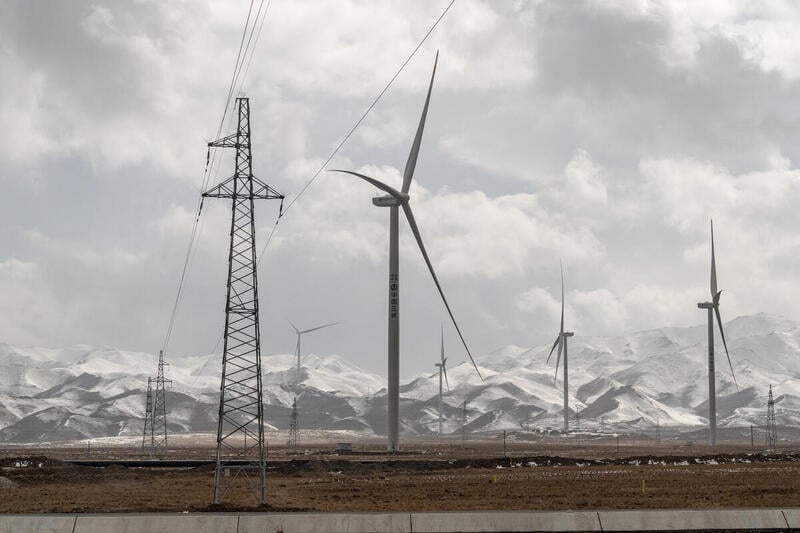Beijing, 17 August 2017 – On 16 August Chinese media reported that a new coal to chemical plant in Shanxi province will receive 1.5 billion RMB (USD 224 million) worth of green bonds.[1] Greenpeace East Asia calculations estimate that the new plant will release about 1.9 million tons of CO2 per year. That is equivalent to about one sixth of the carbon emissions reductions China achieved through the closure of thermal coal power plants in 2014.[2]
This is the second coal-based project to receive a green bond, after the issuance of a RMB 800 million green bond to a new combined heat and power coal plant construction project in Zhejiang province in May 2016.[3] Greenpeace East Asia estimates the Zhejiang project will emit about 900,000 tons of CO2 per year once it enters production.
“There is nothing ‘green’ about this project. With its enormous carbon emissions, the project will be a stain on China’s hard-earned climate leadership credentials,” said Greenpeace East Asia climate and energy campaigner Huang Wei.
“Green finance is a powerful tool which could accelerate China’s energy transition away from coal and towards renewables. We urge the Chinese government to reassess its green finance criteria and remove all possibility of coal project financing.”
The Shanxi coal to chemical project will be constructed by the Shanxi Jinmei Huayu Coal Chemical Company, a subsidiary of the Jinmei Group, China’s largest coal to chemical producer and a Fortune 500 listed company.[4] Once it enters production, the project aims to use 2.2 million tons of high-sulphur coal to produce 500,000 tons of methanol gasoline (MTG) per year. Secondary production will include 65,000 tons of Liquid Petroleum Gas (LPG), 60,000 tons of durene, 73,000 tons of sulfuric acid and 25,000 tons of ammonium sulfate.[5]
China’s criteria for green bonds, managed by the National Development and Reform Council (NDRC) and the People’s Bank of China, currently include the construction of thermal coal and coal-to-chemical projects.[6]
The bonds issued to the Shanxi and Zhejiang coal-based projects amount to 2.3 billion RMB (USD 343.5 million). Though this accounts for just 0.7% of the total cumulative value of green bonds issued in 2016 and 2017 year-to-date [7], the issuance of green bonds to coal projects, especially new constructions and carbon-intensive coal to chemical plants, is a cause for concern for international investors.
[2] Calculations are based on the average CO2 emissions of a modern coal to chemical plant as calculated in 张媛媛,《典型现代煤化工过程的二氧化碳排放比较》 化工进展, 2016, 35(12):4060-4064. The calculations show that the new coal to chemical plant will emit between 17% and 30% of the carbon emissions reductions achieved through China’s closure of thermal coal power plants in 2014.
[3] 《浙江嘉化能源化工股份有限公司:绿色公司债券绿色项目进展及环境效益 2016 年度报告》
[4] http://www.fortunechina.com/fortune500/c/2017-07/20/content_286799.htm
[5] http://g2.m.cnr.cn/xml/523900987504101183_tt_20170815.html?tt_group_id=6453945894743441678
[6] For details of China’s green bonds criteria see: 《绿色债券发行指引》 & 《煤炭清洁高效利用行动计划(2015-2020年)》
[7] 《中国绿色债券市场现状报告2016》 第4页,气候债券倡议组织和中央国债登记结算有限责任公司联合编制 ; 《今年我国绿色债券发行逼近千亿》
Tom Baxter, International Communications Officer
Greenpeace East Asia, Beijing | +86 156 5241 1229 | [email protected]
Greenpeace International Press Desk, [email protected], phone: +31 (0) 20 718 2470 (available 24 hours)



